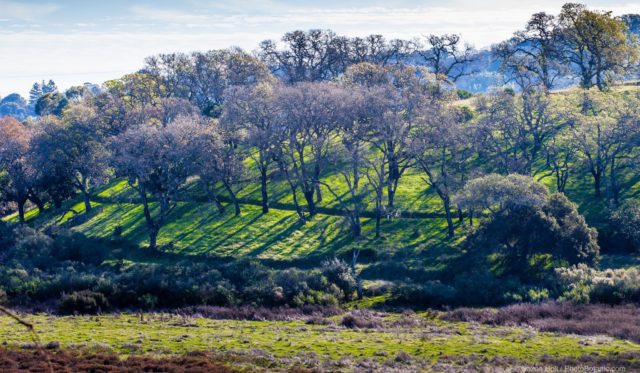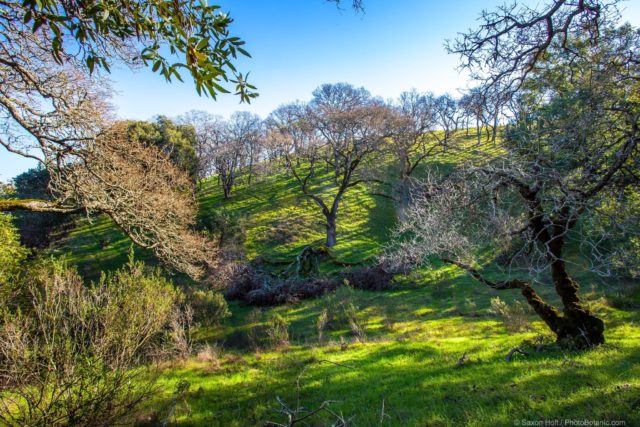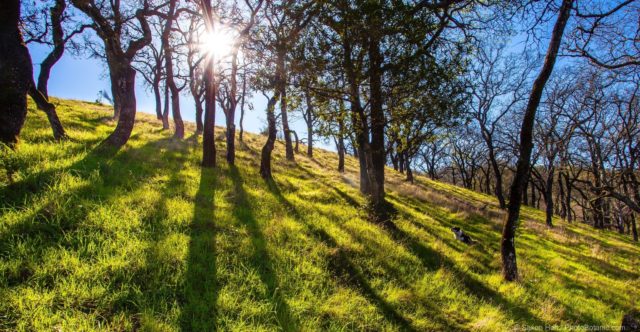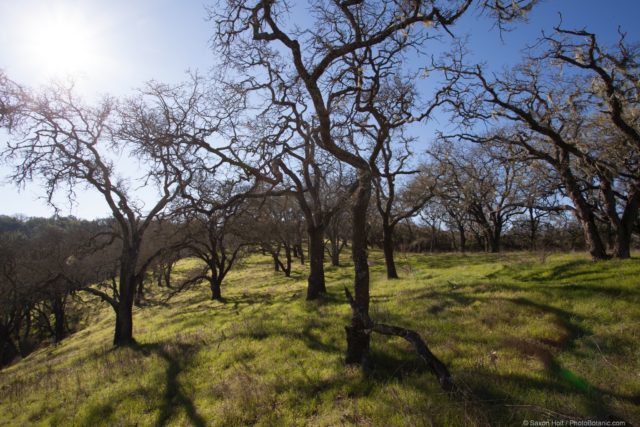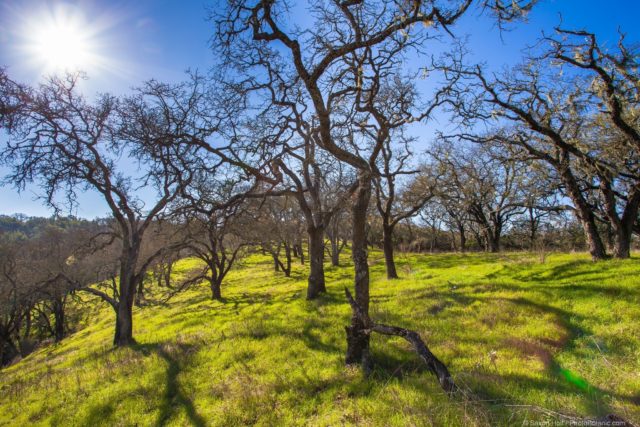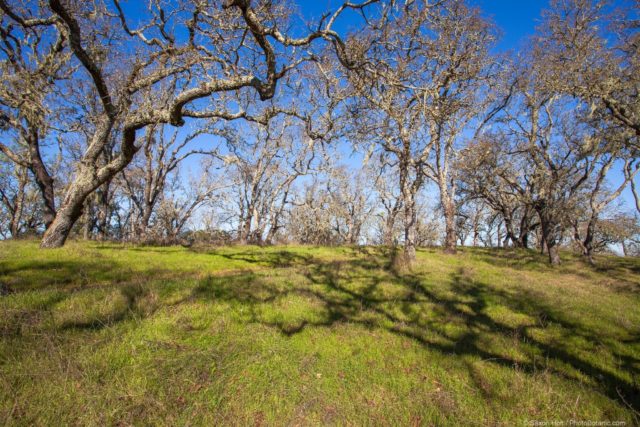Have you noticed ? The days are getting longer.
It is too soon to actually see the difference now, but a few days ago, exactly at the winter solstice, I took advantage of the sun being at its lowest point to make a series of photographs of shadows against a north facing hill.
I hike this area regularly and have been noticing the shadows getting longer, and this year made more dramatic because early rains made the grasses sprout, turning the hills a chartreuse green in the backlight.
At the solstice, here in the Rush Creek Open Space Preserve in Northern California, the sun’s zenith is only about 29° elevation, barely clearing the steep hill, which creates the longest shadows of the year.
To take advantage of this, I found a spot across from the hill so that I could look back into the slanting shadows, which combined with the back light of the low sun, made grasses glow.
Then, using a telephoto lens and carefully composing the composition on the tripod, I had my dog Kona, pose on the little deer path running under the trees to make the photo especially personable and unique.
To emphasize uniqueness of this photo, and the ability for the camera to capture a moment in time, I used the GPS feature of my phone to note the exact latitude and longitude (38° 7′ 32.75″ N and 122° 31′ 55.189″ W), while looking 121° SouthEast.
If you were to take those same GPS coordinates you could find this exact spot – but it will never look like this again. This year we had such early October rains and enough warm weather for the grasses to grow, the hills may never be so green at the solstice. And even if we do have similar conditions, this Blue Oak woodland (Quercus douglasii) will have changed and the shadows will never be the same.
To study these shadows even further, I wanted to see what they look from where Kona was first posing, but looking due south directly into the sun.
At this new angle looking up the hill about high noon, the sun is barely clearing the top, the back light effect is most dramatic, and the shadows are as long as they will ever be.
I have learned to appreciate bright sun in my photography. Photo editors have urged me to capture the sun in my garden photography because viewers expect to see a sunny California. While it is very difficult to do this in the garden where the shadows create problems, out here in the native landscape, shadows can be quite dramatic, especially in the winter.
I have also learned to take advantage of digital photography in recent years. Digital files have a much higher dynamic range than film ever had, so it is possible to capture the detail in the highlights and shadows of the same photograph with a bit of manipulation in the post production process.
Here is another photograph on the day of the solstice, shown first before any manipulation, which is similar to how film would’ve captured this scene:
Now, the corrected photo, extending the dynamic range in PhotoShop.
This dramatic effect, looking almost due south and into the sun, still able to capture highlight detail, would have never been possible with traditional film. It further illustrates the power of backlight utilizing the great great dynamic range of a good camera.
Being able to use back light is so much more interesting than the traditional Kodak Way of shooting on sunny days. Look now at the exact spot but here looking north, away from the sun. See how the light is quite flat.
Looking this direction, with the sun over the shoulder, is the way Kodak originally advised photographers in the 1930s to take pictures of landscapes, knowing that film could not handle the extremes of backlight. But isn’t the backlight a much more interesting photograph?
To illustrate how the light changes depending on the camera angle to the sun, I created this 180° panorama from the above photographs. (The panorama was stitched together from four different photographs.)
Notice how the light changes from left to right, looking south to north, from back light to flat light.
It has often been said that light is everything in photography. There is nothing like shooting at the winter solstice to really see that power.
You may have noticed I use my dog Kona, in many of these photographs. If you have a big enough screen you see her in the center of the panorama. You can follow our hikes, Walks with Kona dog on Instagram.
And there is much more about using Light in the Garden on my Photobotanic website.


